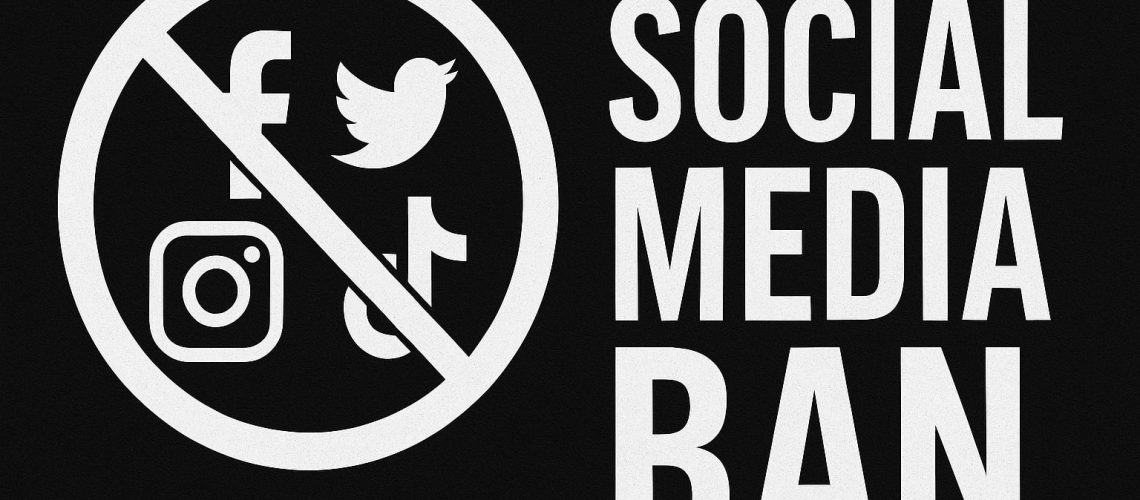In September 2025, the Nepalese government ordered 26 major social platforms, including Facebook, Instagram, WhatsApp, YouTube, X (Twitter), Snapchat, and LinkedIn, to stop working, as they have allegedly disobeyed a new registration and content-regulation regime. As per the officials, it is a matter of “sovereignty” and “national security.”
For Gen Z of Nepal, it seemed like an attack on their expressions and free speech. The social media applications were not just entertainment platforms but sources of news, classrooms, career networks, and a way of self-expression.
Why Social Media Matters for Gen Z.
- In Nepal, 80% of people aged under 30 use social platforms (like Facebook and Twitter) as their first source of news and civic information. Many people see Facebook and Instagram as the equivalent of a notice board or a town square and a protest site.
- Unlike their elders, this group coordinates petitions, crowdfunding, and protests mostly online. Removing these platforms is like closing every town hall overnight.
- Social media offers friendship and the emotional support network, which is important. Taking the app away caused real distress in young users. In interviews with local outlets, they used words like “suffocation” and “social isolation.”
What Actually Happened , Timeline & Key Events:
- Protests erupted on 8 September in Kathmandu and other cities. Security officials used tear gas and rubber bullets at some parliament protesters’ protests. At least 19 people died on that first day.
- The magnitude was underestimated by the government The ban was rolled back quickly (by 9 September). The violence was much more than expected and protests overwhelmed many institutions. Buildings and Government properties of politicians set on fire, the PM resigned.
- Teenage protestors organised through various informal networks, social media (before it was banned), and offline. It appears that our intelligence and security forces were caught unaware by the rapid unfolding of events.
- Parliament set ablaze, party headquarters damaged, political leaders’ locations attacked, government offices set on fire, curfews imposed, army deployment.
- The ban on social media was lifted eventually and Mr. K.P. Sharma Oli resigned as PM.
Misreading a Digital Generation:
The state seemed to think that banning the apps could assuage dissent or limit “foreign influence.” In fact, it took away a pressure valve and gave the fragmented youth movement a unifying cause. Intelligence agencies failed to anticipate how rapidly Gen Z would switch to alternative channels, nor how much they would feel the ban was an assault on their dignity.
The authorities felt that banning certain apps could heighten dissent or limit “foreign interference.” In fact, it took away a pressure-release value and gave a unifying cause to disparate youth movements. Intelligence agencies were caught off guard by the speed at which Gen Z transitioned to alternate channels. They also misjudged how much they would feel that the ban was an affront to their dignity.
From Distress to Protest
On 8 September, Gen Z took to the streets chanting for free speech and democracy in Kathmandu. Due to their inability to use traditional channels, they resorted to using VPNs, SMS, and offline networks, which is a classic example of how digital habits impact political change.
There was unrest for the first day, and security officials killed 19 due to bullets and tear gas, dozens more were killed on the second day. On the third day, in spite of the curfew and army deployment, government structures were brought down to the ground.
Collapse and the Climb down:
The government revisited the decision and gave back the social media platforms. The Prime Minister K.P. Sharma Oli resigned under pressure, and elections were called. The damage had been done. Analysts are now referring to the incident as Nepal’s “Gen Z Uprising,” the first major street movement anywhere triggered by a widespread social media blackout.
Lessons From Nepal:
- Bans don’t work anymore in the electronic age. It does not shut down dissent; it merely amplifies it.
- According to members of Gen Z and Millennials, social media is a vital utility for society, just like a public road. Cutting them off feels like cutting electricity or water.
- Governments should consult before they enforce and allow a step by step introduction of rules, no surprise bans, but credible safeguards for rights.
Conclusion:
The turmoil in Nepal demonstrates the dangers of a government that sees social media merely as a threat to security and not the connective tissue of a generation. Social media is not leisure for Gen Z’s they learn, work, date, organise, and dream here. These feeds went quiet, and their anger went public and turned around the politics of a country in days.



